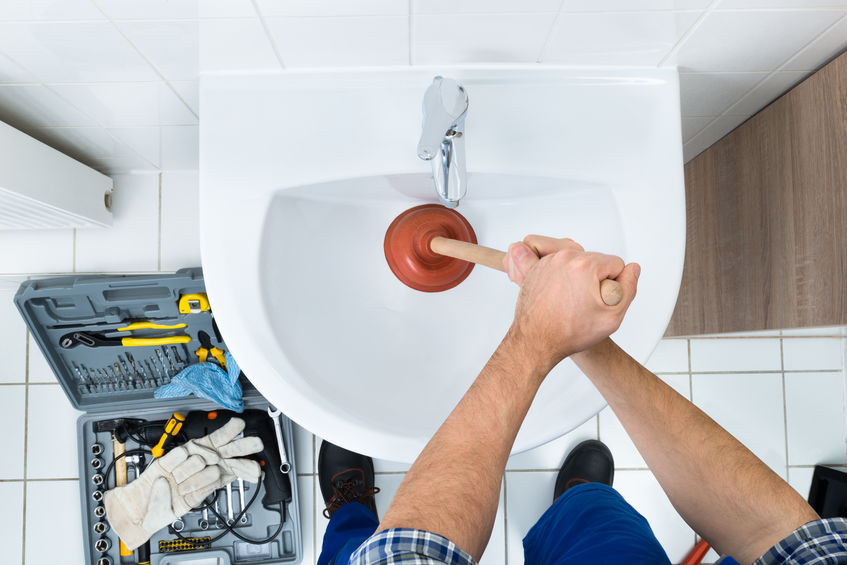Are you currently interested in answers around A Guide to Plungers (and How to Use Them)?

Intro
Appropriate maintenance of household drains pipes is crucial for preventing clogs and ensuring smooth water circulation. One of the trick tools in every property owner's toolkit is the plunger, alongside different drainpipe cleansers designed to tackle stubborn blockages successfully. This post discovers just how to use bettors and drainpipe cleansers properly to maintain your drains pipes moving openly.
Area 1: Comprehending Bettors
Kinds of Plungers
There are a number of types of bettors readily available, each created for various types of drains and obstructs. The most common kinds consist of cup bettors, flange bettors, and accordion bettors.
How Plungers Work
Plungers service the concept of developing stress and suction to dislodge clogs. When correctly applied over a drain, they produce a vacuum cleaner that can pull out debris or break up obstructions.
Selecting the Right Plunger
Choosing the best plunger depends on the type of drainpipe and the nature of the obstruction. Mug bettors are suitable for sinks and tubs, while flange plungers are better matched for commodes because of their design.
Common Blunders with Bettors
Preventing these mistakes makes certain reliable plunging: incorrect seal around the drain, not enough force, and not clearing surrounding particles.
Section 2: Using Plungers Efficiently
Preparation
Prior to diving, make sure the plunger covers the drain totally and creates a tight seal. Clear any type of noticeable debris around the drain opening.
Method
Begin with mild plunging movements to construct suction. Rise stress gradually, using a steady rhythm. Repeat as necessary until the drain clears.
Troubleshooting Tips
If plunging does not function, attempt changing the seal, applying petroleum jelly for a better seal, or using a various sort of bettor.
Section 3: Understanding Drain Cleaning Company
Sorts Of Drain Cleaners
Drain pipes cleansers can be chemical or enzymatic. Chemical cleaners make use of solid chemicals to dissolve clogs, while chemical cleaners use natural enzymes to break down organic matter.
Exactly How Drain Cleansers Job
Chemical cleaners respond with blockages to dissolve them, while enzymatic cleaners break down natural products like hair and grease without damaging pipes.
Safety and security Factors to consider
Constantly put on handwear covers and eye security when utilizing chemical drain cleansers. Make certain ample air flow and comply with maker directions meticulously.
Eco-Friendly Alternatives
Consider making use of vinegar and baking soft drink or enzyme-based cleansers for environment-friendly choices that are much safer for pipelines and the setting.
Section 4: Utilizing Drain Cleaners Effectively
Application Strategies
Pour chemical cleansers directly into the drain opening. Enable them to work for the advised time before purging with hot water. Chemical cleaners must rest over night.
Safety measures
Stay clear of mixing various kinds of cleaners, as this can create harmful fumes. Never ever utilize chemical cleansers along with a bettor, as splashing can take place.
Handling Persistent Clogs
For persistent clogs, think about making use of a plumbing snake or calling a professional plumbing professional to avoid damage to pipelines.
Conclusion
In conclusion, understanding how to use plungers and drain cleansers effectively is important for maintaining healthy and balanced plumbing systems. By picking the right devices and strategies, homeowners can deal with small blockages and avoid significant pipes issues down the line.
How to Use a Plunger to Unclog a Drain
The humble plunger is a simple yet effective tool for breaking clogs in sinks, tubs and toilets. This handy tool is easy to use. You can make the most of its power if you understand how it works. Ready to dive in? Here’s what you need to know.
Safety First!
Never use a plunger with drain chemicals. Water will splash as you work, and the chemicals can spatter, burning skin and eyes. It’s a good idea to use rubber gloves and wear safety goggles when you work on a clog.
Choose the Right Tool for the Job
Plungers come in two different styles. Sinks, bathtubs and showers require a cup plunger. Like its name suggests, the rubber end is shaped like a cup. Use a flange plunger on toilets. These plungers have a rubber funnel extending from the cup. A plunger needs to be big enough to cover the drain.
Ready, Set, Plunge!
- Coat the rim: Coat the plunger rim with petroleum jelly. This helps make a better seal.
- Block outlets: Hold a wet rag over nearby outlets such as the overflow vent or the drain in a second sink.
- Release air: Insert the plunger at an angle into the water. Water will displace air in the cup. A water-filled cup is more forceful than one filled with air.
- Keep the plunger upright: Hold the plunger perpendicular to the drain. Use fast, forceful strokes, but make the first stroke gentle. The first stroke can create a splash if the cup still contains air. Thrust the plunger 15 to 20 times.
- Snap off the plunger: The final stroke should be a strong upward motion that ends when the plunger snaps off the drain.
- Repeat the process: you may need to repeat this sequence several times. When the water drains away, your work is done. High-five!
https://plumbernw.com/blog/how-to-use-a-plunger-to-unclog-a-drain/

As a keen person who reads on Tips on How to Effectively Use a Plunger, I figured sharing that piece of content was important. Liked our posting? Please quickly share it. Let another person discover it. Thank you for your time. Kindly stop by our blog back soon.
Schedule Service
Comments on “Tips to Apply Plunger and Drain Cleaners Effectively: Pro Guidance”